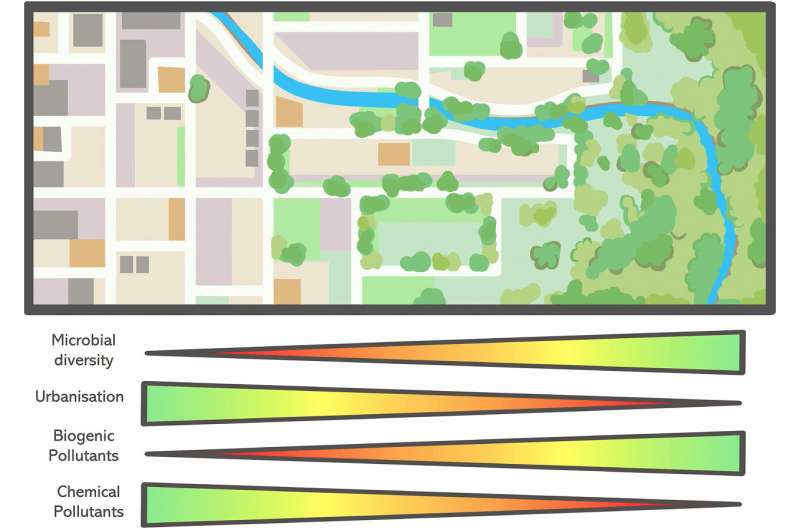This article has been reviewed according to Science X's editorial process and policies. Editors have highlighted the following attributes while ensuring the content's credibility:
fact-checked
peer-reviewed publication
trusted source
proofread
Designing healthier cities with good bacteria

The urbanization of towns could be contributing to poor health outcomes in our communities, research from the University of Adelaide and Flinders University has found.
In the narrative review, published in the journal Environmental Research, researchers highlight the good bugs we have evolved with through well-designed cities, urban landscapes and buildings, which can help our immune systems to function properly.
Key to this is the inclusion of large green spaces which consider conservation, environmental, social and public health outcomes in developments as well as building designs with windows that open and indoor plants.
"Exposure to many bacteria in the environment is actually good for us," said lead author Kate Matthews, a University of Adelaide graduate and Flinders Ph.D. student.
"Our bodies are adapted to dealing with a diversity of bacteria in our environment, providing the 'training' that teaches our immune system not to overreact to everyday exposures."
The researchers found that as humans have become increasingly removed from nature, the diversity of microbes in the green spaces they were exposed to decreased. This can mean immune systems can overact and make allergies, asthma, and autoimmune diseases worse.
"Soils provide an incredibly rich and diverse source of microbes, as do the plants that grow in them," said Matthews.
"So the healthy exposures to nature that we have lost could be regained by designing more green spaces in urban areas.
"As the percentage of the world's population living in urban environments increases (68% by 2050) so it becomes more important to design our urban environments in such a way as to promote human exposure to diverse microbiota, with the potential to improve health outcomes."
The World Health Organization recommends there be at least one public green space of at least 0.5 hectare within 300 m of a place of residence, an important consideration for urban planners if they want the residents of their cities to remain healthy.
"Unlike other approaches to alter the human microbiome (including diet, exercise and probiotics), making changes to the design of the environments people are exposed to means that individuals do not have to make changes to their behavior to improve their health," said leader of the University's Environmental Allied Health group Dr. Jessica Stanhope.
"Landscape designers need to consider how people use these spaces, including those who may experience challenges in access, for example those living with disabilities, and people in residential care."
More information: Kate Matthews et al, Health by design; optimising our urban environmental microbiomes for human health, Environmental Research (2024). DOI: 10.1016/j.envres.2024.119226
Journal information: Environmental Research
Provided by University of Adelaide




















